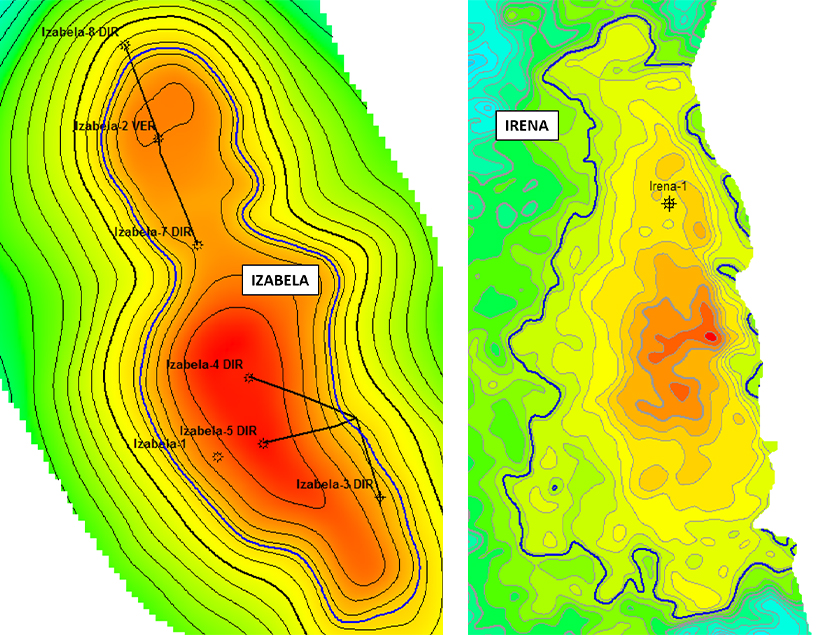Izabela fields
- Home
- Operations
- Croatia
- Izabela and Irena fields

The Izabela gas filed operated by EDINA, is an offshore gas asset located in the Izabela Concession offshore the Croatian North Adriatic Sea. It is a two-platform structure with tre producing wells and came on stream in 2014.
Energean has a 70% W.I. while the remaining 30% belongs to INA. Currently the field is producing 15000sm3/day.
Energean is in final evaluation stage for the development of the Irena gas field (693 mm3 reserves, P90 case) located in the same concession. If FID is made, first gas is forecasted in 2H2025. The company has also identified the Izabela SE prospect (Izabela SE, 0.7 billion m3 reserves, P90 case) which could be tested with an exploration well in 2H 2024.
Fields and history
The Izabela field is in the central part of the block and the Irena field is located approximately 7 kilometers north of the Izabela field, in the northern part of the block.
The Izabela field is a multi-reservoir dry gas field that was discovered in 2004 and developed with dual-completion wells. The gas-bearing reservoirs are turbidites in the Carola Formation (PLQ-A5) of Lower Pleistocene age (Figure 2). Estimated porosity ranges from 24 to 31 percent, Sw ranges from 35 to 62 percent, and permeability varies from approximately 100 to 900 millidarcys. The Izabela field was evaluated using volumetric analysis of the gas in place coupled with recovery factors derived from anticipated abandonment pressures and the production performance of the wells..
Gas production started in 2014, and the Izabela field utilizes two production platforms and five producing wells. Some of the production strings in the Izabela field have been shut inintermittently to curb water production.
The Irena field is a structural-stratigraphic trap discovered in 2006 and contains a single dry gas reservoir in the Ravenna Formation of Pleistocene age. All reserves estimates for the Irena field were based on the volumetric estimate of gas in place coupled with analogous recovery factors. Estimated porosity and Sw are 38 percent and 15 percent, respectively